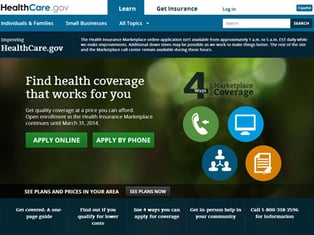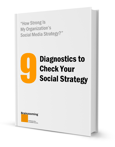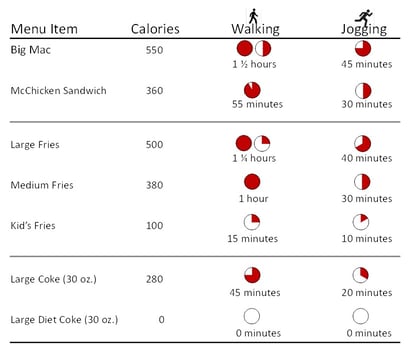I avoid politics here on Brainzooming, so this isn't a political guest post. It's a customer experience strategy lesson post from customer experience strategy and innovation expert Woody Bendle. Woody weighs in today on how to avoid your own high profile customer experience management issues based on learnings from the roll out of healthcare.gov. Here's Woody!
 3 Customer Experience Strategy Lessons in the Healthcare.gov Launch by Woody Bendle
3 Customer Experience Strategy Lessons in the Healthcare.gov Launch by Woody Bendle
Last month, one of the most highly anticipated recent website launches, www.healthcare.gov became one of the largest customer experience failures ever. Aside from the many technical design and architecture deficiencies, healthcare.gov provides three key Customer Experience Management (CEM) lessons.
- Do not underestimate peak demand
- Do not go live without stress-testing peak demand
- Have backup plans for worst case scenarios
Let's dive in to these three lessons.
Lesson 1 – Do not underestimate peak demand!
 This is a blinding flash of the obvious, but if you don’t understand your possible peak demand, really bad things can happen. Like millions of really unhappy people wasting hours staring at a 404 error page, and all sorts of really bad press resulting in plummeting approval ratings.
This is a blinding flash of the obvious, but if you don’t understand your possible peak demand, really bad things can happen. Like millions of really unhappy people wasting hours staring at a 404 error page, and all sorts of really bad press resulting in plummeting approval ratings.
Within minutes of go-live, healthcare.gov came to a screeching halt. Why? One contributing reason was a gross underestimation of how many people might visit the website its first day.
The thing is, figuring out a possible maximum peak demand for the ACA website isn’t hard – there are multiple scenarios for estimating it.
For an upper bound, we could naïvely assume every one of the roughly 240 million people in the US over the age of 18 could possibly visit the site on day one.
Since this is highly unlikely, what would be reasonable? How about the number of people without insurance now required to have insurance?
According to a September news release from the Census Bureau an estimated 48 million people in the US did not have health insurance in 2012 (including 6.6 million children under 18). That translates to forty-one or forty-two million uninsured US adults legally required to obtain healthcare. It’s possible - although not probable - they could all decide to visit the website day one.
Another consideration is not everyone in the US has Internet access. The Pew Center reports that 15% of US adults don’t use the internet, leaving approximately 35 million uninsured US adults with internet access who just might visit healthcare.gov on day one. But, even this isn’t all that likely given America’s second favorite pastime (after baseball) is procrastination.
Cyber Monday, one of the busiest Internet traffic days annually, provides another estimate of potential peak demand. According to Experian Hitwise, amazon.com had the highest Cyber Monday traffic volume in 2012 with nearly 39 million visits, walmart.com was second with nearly 19 million visits, and bestbuy.com followed with just over 9 million site visits. While it is unlikely the healthcare.gov launch would be met with amazon-type traffic its first day, it is nonetheless remotely possible.
How much demand peak demand should they have planned for with healthcare.gov on day one? Apparently, way more than they did.
This leads us to our second key Customer Experience lesson.
Lesson 2 - Do not go live without stress-testing peak demand
From the Experian statistics, it is clearly possible to handle millions of site visitors on a single day. Companies are already designing and supporting websites to handle massive amounts of daily site traffic. That healthcare.gov crashed immediately upon launch strongly indicates the team could not have performed stress testing anywhere near possible peak site demand levels.
The worst part though, according to comScore, is only about 2.5 million people actually visited healthcare.gov on its first day using PCs. And, since roughly 20% of all Internet traffic comes via mobile devices, potentially only 3 million people in total attempted to visit healthcare.gov its first day. If each person attempted to visit the site twice, due to technical hiccups, it might have received between 5 to 6 million visits its first day. This certainly is not a big traffic day by modern Internet standards. But, healthcare.gov still crashed – creating millions of frustrated customers and placing a dark cloud of skepticism over the entire ACA program.
This leads me to one final lesson from the launch.
Lesson 3 - Have backup plans for worst-case scenarios
If healthcare.gov were any other other website, hundreds of millions of people globally might not know what a colossal failure its launch was. It isn’t just any other website; it is perhaps the most highly anticipated, highly visible (not to mention, legally mandated for millions of currently uninsured US adults) website launches in history!
Should you be responsible for such a website, there are two critical questions to ask and reliably answer:
- What’s the worst that could happen?
- What are we going to do if the worst thing actually happens?
Horrible customer experiences are very difficult to recover from successfully. The growing widespread knowledge of horrible customer experiences, such as the healthcare.gov launch, makes these situations even more challenging! I’m certain there are more than a few in Washington who agree right now. But if you plan for worst-case scenarios, you can proactively attempt to minimize (and possibly even recover from) the damage done due to underestimating and under-testing peak user demand.
The Final Word? Hardly
In the immortal words of Dwight D. Eisenhower: “In preparing for battle [or the launch of the healthcare.gov marketplace] I have always found that plans are useless, but planning is indispensable.” - Woody Bendle
If you enjoyed this article, subscribe to the free Brainzooming blog email updates.
“How strong is my organization’s social media strategy?”
Is your social media implementation working as well as it can? In less than 60 minutes with the new FREE Brainzooming ebook “9 Diagnostics to Check Your Social Strategy,” you’ll have a precise answer to this question.
Any executive can make a thorough yet rapid evaluation of nine different dimensions of their social media strategies with these nine diagnostics. Download Your Free Copy of “9 Diagnostics to Check Your Social Strategy.”




